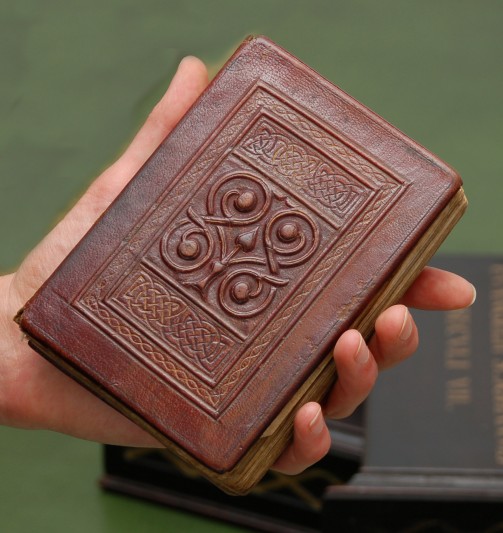Letters relating to the embassy of Thomas Bruce, 7th Earl of Elgin, at Constantinople in the first decade of the 19th century.
Search FNL grants since 1931
The St Cuthbert Gospel is the earliest surviving intact Western book: it is in its original binding, and it has never been restored or resewn.
Details: The library collections at Belton, Lincolnshire, are among the finest in any National Trust house. The Library and Study, each containing about 6,000 books, give an almost complete picture of book collecting over 350 years.
Peter Crosthwaite had a varied and extraordinary career as a navigator, excise agent, inventor, social reformer and entertainer. He was born in Keswick, joined the East India Company and worked his way from cabin crew to First Navigation Officer.
The Rice Archive is a comprehensive record of one of Kent’s substantial farming families, extending from the 18th to the 20th centuries.
Charles Grey was a London associate of a firm of Alnwick attorneys named Adams; the firm's papers were the subject of the above sale. His letter to an unnamed correspondent gives a rare and remarkable account of bodysnatching activity in Tottenham.
Bruce Castle Museum is a 16th century manor house in Tottenham, formerly known as Lordship House, which now houses the museum and archives for the London Borough of Haringey. The building has had various owners and a fascinating history over the past 500 years.
A volume of over 400 pages, containing detailed maps of each farm on the estate (which extended to 4000 acres in half a dozen parishes, including those elements in Yorkshire and Ireland), cut from a book of over thirty surveys made by Edward Wakefield in 1814.
This is the only leaf known to survive from an otherwise lost 9th-century copy of Bede's Homilies on the Gospels.
1. A rental of the Corfe Mullen estate of Sir John Coventry, 1859-1863. The Coventry family lived at Knowle House, near Wimborne, Dorset and this record of the estate rentals is a new source of information on the management of the property.
